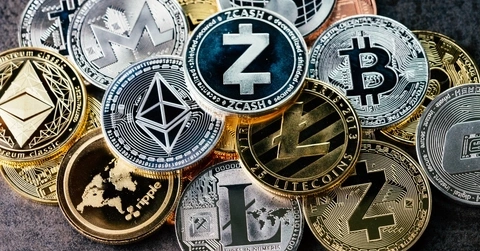Cryptocurrency for Beginners: Navigating Your First Steps with Confidence
Cryptocurrency for Beginners: The First Steps Matter More Than You Think
There’s something strangely compelling about cryptocurrency for trading beginners. Maybe it’s the stories of people turning modest investments into life-changing wealth, or the talk of blockchain reshaping industries. But if you’re brand new, chances are it all feels a bit out of reach — like walking into a foreign city without a map.
This is where a human, grounded perspective helps. Cryptocurrency for beginners isn’t just about technical explanations or trend-chasing. It’s about demystifying a system that can feel exclusive and complex. Whether you’re curious about Bitcoin, wondering what a crypto wallet actually does, or just trying not to lose money, this guide is designed to meet you right at the starting line — no experience needed.
Why Cryptocurrency Exists in the First Place

Credit from FinanceBuzz
To understand cryptocurrency, it helps to zoom out. The first coin — Bitcoin — was created in 2009, not as a get-rich-quick scheme, but as a reaction to distrust in traditional banking after the financial crisis. It was an experiment in decentralization: a currency not controlled by governments, banks, or corporations, but by code and consensus.
At its core, cryptocurrency is digital currency built on a technology called blockchain — a kind of open ledger that records transactions publicly, without a middleman. Each time you send or receive cryptocurrency, it’s documented in this global, unalterable system.
This all sounds abstract, but the implications are surprisingly personal. For people in unstable economies, crypto can offer more reliability than local banks. For freelancers, it can mean faster, borderless payments. And for newcomers like you, it’s an opportunity to understand how digital value can be stored, moved, and grown outside traditional systems.
Setting Expectations: This Is Not a Shortcut to Wealth
Before diving into wallets and exchanges, it’s important to adjust your mindset. Crypto is exciting, but it’s not magic. Prices fluctuate wildly. Headlines tend to exaggerate. And while some people make profits, many others lose money simply because they jumped in without understanding the landscape.
Learning how to start with crypto isn’t just about picking the right coin — it’s about knowing where the risks are, how to protect yourself, and how to grow from small, confident steps rather than rushed decisions.
Your First Entry Point: From Curiosity to Action
Most beginners start by choosing a major platform like Coinbase, Binance, or Kraken. These are cryptocurrency exchanges — think of them like marketplaces where you can buy, sell, or hold digital assets. The sign-up process is fairly standard: create an account, verify your identity, and link a payment method.
Once that’s done, you’re ready to buy your first coin. And here’s something most people don’t realize at first — you don’t need to buy an entire Bitcoin or Ethereum. Just like you can own half a dollar, you can own 0.001 of a Bitcoin. This is one reason digital currency is appealing for beginners: you can start small and still get hands-on experience.
Understanding Wallets: Where Does Your Crypto Actually Live?

Credit from Reddit
When you purchase crypto, it doesn’t go into your physical wallet or bank account — it lives on the blockchain. What you own is a set of keys that grant access to your funds.
This is where crypto wallets come in. These are tools that store your private keys securely. There are two main types:
- Hot wallets are connected to the internet — they’re convenient, often built into exchanges, but more vulnerable to hacking.
- Cold wallets are offline — usually in the form of hardware devices or even paper — and offer more protection for long-term storage.
For beginners, it’s common to leave assets in a hot wallet initially, especially when trading small amounts. But as you grow more confident, learning how to manage your own wallet becomes a crucial part of crypto security.
If you’re asking how to get started with cryptocurrency as a complete beginner, understanding wallets is more essential than understanding blockchain code. It’s your first act of self-custody in a system built on independence.
Reading the Market Without Losing Your Mind
One of the first things you’ll notice after buying crypto is how often the price changes. One day it’s up 8%, the next it’s down 12%. Unlike traditional stock markets, crypto trades 24/7, and the swings can be exhausting — or addictive.
It’s easy to fall into the trap of checking prices every hour. But seasoned users know this: price is just one story. The better question is: what’s driving it?
That’s where learning crypto basics comes in. Terms like market cap, volume, and circulating supply help paint a fuller picture. So do concepts like bull vs. bear markets, and understanding how news, regulation, or social media affect sentiment.
You don’t need to become an expert overnight. But resisting the emotional rollercoaster — and anchoring yourself with information instead of instinct — is what separates a flustered newbie from a composed beginner.
Cryptocurrency for Beginners: Avoiding the Most Common Mistakes

Credit from Inveslo
For many first-time users, the biggest risks aren’t technical — they’re behavioral. Mistakes like:
- Buying based on hype without researching the project
- Falling for scams or fake investment platforms
- Sending crypto to the wrong wallet address (these are irreversible)
- Forgetting wallet passwords or private keys
- Investing more than they can afford to lose
Each of these could result in permanent loss. But they’re all avoidable with patience and planning.
The most underrated advice in crypto? Pause before clicking. Always double-check addresses. Don’t rush transactions. And if something feels off — it probably is.
This might not be flashy guidance, but it’s the kind that keeps beginners safe.
Cryptocurrency for Beginners: Exploring Without Pressure
There’s often pressure in crypto spaces to “do more” — start trading, stake coins, try DeFi platforms, buy NFTs. These are real parts of the ecosystem, but they’re not requirements.
In fact, many experienced users recommend starting with just observing. Follow some reputable newsletters, track a few coins, maybe join a low-noise discussion group or subreddit. You’ll quickly notice patterns, not just in the market but in how people talk about it — who’s thoughtful, who’s selling something, who’s just making noise.
This is part of your crypto guide for newbies: exposure before action.
Cryptocurrency for Beginners: Learning in Layers
The beauty of crypto is that you don’t need to understand everything all at once. You can grow your knowledge in layers.
Start by buying a little. Then learn about wallets. Later, explore the differences between proof-of-work and proof-of-stake. Eventually, you might try interacting with a smart contract, providing liquidity, or participating in a DAO (decentralized autonomous organization).
Each step leads to another. But the pace is yours to set. And that’s the point: this system was built to be open, not exclusive.
Cryptocurrency for Beginners: What Comes Next?
After the basics, many beginners wonder: what do I actually do with this crypto?
Well, it depends. Some people use it as an investment, holding long-term. Others use it for cross-border transfers, especially in countries with unstable currencies. Some explore crypto-based savings accounts or lending platforms (which carry more risk, and require careful reading of terms).
And others simply enjoy learning — treating crypto as a way to understand the future of digital money, finance, and the internet itself.
No matter your reason, the important thing is that it’s yours. Your journey, your rules.
Conclusion: Building Confidence, One Step at a Time
Cryptocurrency for beginners isn’t a sprint — it’s more like learning a new city by walking through its streets. At first, you might get lost or feel unsure. But eventually, the signs make sense, the patterns feel familiar, and your confidence grows.
Start small. Learn gradually. Protect your assets. Ask questions. You don’t need to chase every opportunity. You just need to take one clear, well-informed step — then another.
Crypto is more than numbers on a screen. It’s a shift in how we define and control value. And you’re here, at the beginning of it.




